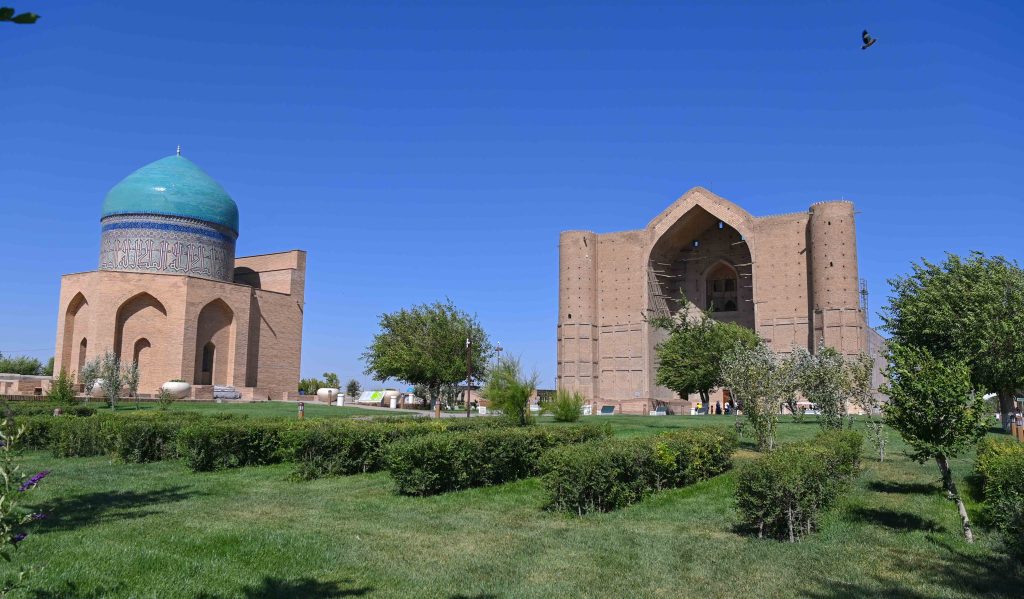
The speech by President of the Republic of Kazakhstan Kassym-Jomart Tokayev at the award ceremony for cultural figures served as a powerful impetus for rethinking the role of historical and cultural heritage in regional development. His statement on the creation of a unified digital platform for the historical and cultural heritage of Central Asian countries opens a new dimension in interstate cooperation and addresses pressing contemporary challenges: the need to preserve identity, integrate cultural practices, and engage new generations in understanding their past.
Cultural Heritage as a Strategic Resource of Central Asia
Central Asia possesses a unique civilizational legacy. The monuments of the Great Silk Road, the ancient settlements of Sogdiana and Khwarezm, the mausoleums and architectural ensembles of the Kazakh steppe, Karakhanid and Timurid architecture — all this represents not only the spiritual wealth of the peoples of the region but also a strategic resource with the potential for sustainable development.
President Tokayev rightly emphasized the need to more actively include sites in the UNESCO World Heritage List and the “Memory of the World” register. This not only increases international visibility but also provides legal guarantees for preservation. The settlement of Sarayshyk is one such site of significance to all of Eurasian history and requires comprehensive reconstruction and scholarly revitalization.
Digitalization of Cultural Heritage: China’s Experience and Regional Guidelines
The initiative to create a unified digital platform for the heritage of Central Asian countries aligns organically with the global trend of cultural digital transformation. China serves as an example of a comprehensive approach to this challenge. In recent years, China has actively implemented technological solutions in the cultural sphere by developing intelligent platforms, virtual museums, digital archives, and artificial intelligence for automatic digitization and analysis of cultural artifacts.
Notably, under the Ministry of Culture and Tourism of the PRC, the National Public Culture Cloud has been launched, providing access to millions of cultural content items — from scanned ancient manuscripts to 3D models of architectural monuments. Specialized initiatives such as the “Digital Silk Road” are already facilitating the digital integration of cultural centers along historical routes.
China also emphasizes the importance of public participation — digital resources are not only created by the state but also enriched through the efforts of researchers, students, and local museums. Access is ensured to educational platforms and virtual expeditions.
Digital Culture as an Element of Eurasian Identity
For Central Asian countries — historically a crossroads of civilizations — the creation of a unified digital platform for cultural heritage can play a key role in shaping regional identity. This initiative makes it possible not only to systematize and preserve tangible and intangible heritage objects but also to make them accessible to the international scientific community, schoolchildren, and tourists.
A unified digital resource will strengthen educational, scientific, and tourism ties among the region’s countries, enable inter-museum cooperation, cross-platform exhibitions, and the formation of a “shared memory” of Central Asia in digital format. In the long term, this may become the foundation for a new model of a “Eurasian cultural space,” where the shared past is transformed into a driver of a sustainable future.
Today, as the world faces an identity crisis and a deficit of trust, culture remains a universal language of mutual understanding. President Tokayev’s call to integrate efforts in the sphere of historical and cultural heritage through digital technologies is not just a technological initiative but part of a broader strategy to strengthen regional solidarity.
China’s experience shows that digitalizing the cultural sector not only preserves the past but also integrates it into an innovative future. For Central Asia, the creation of a digital platform is not merely a project — it is an act of cultural diplomacy and a contribution to the formation of a community of shared destiny in the Eurasian space.
China Studies Center
